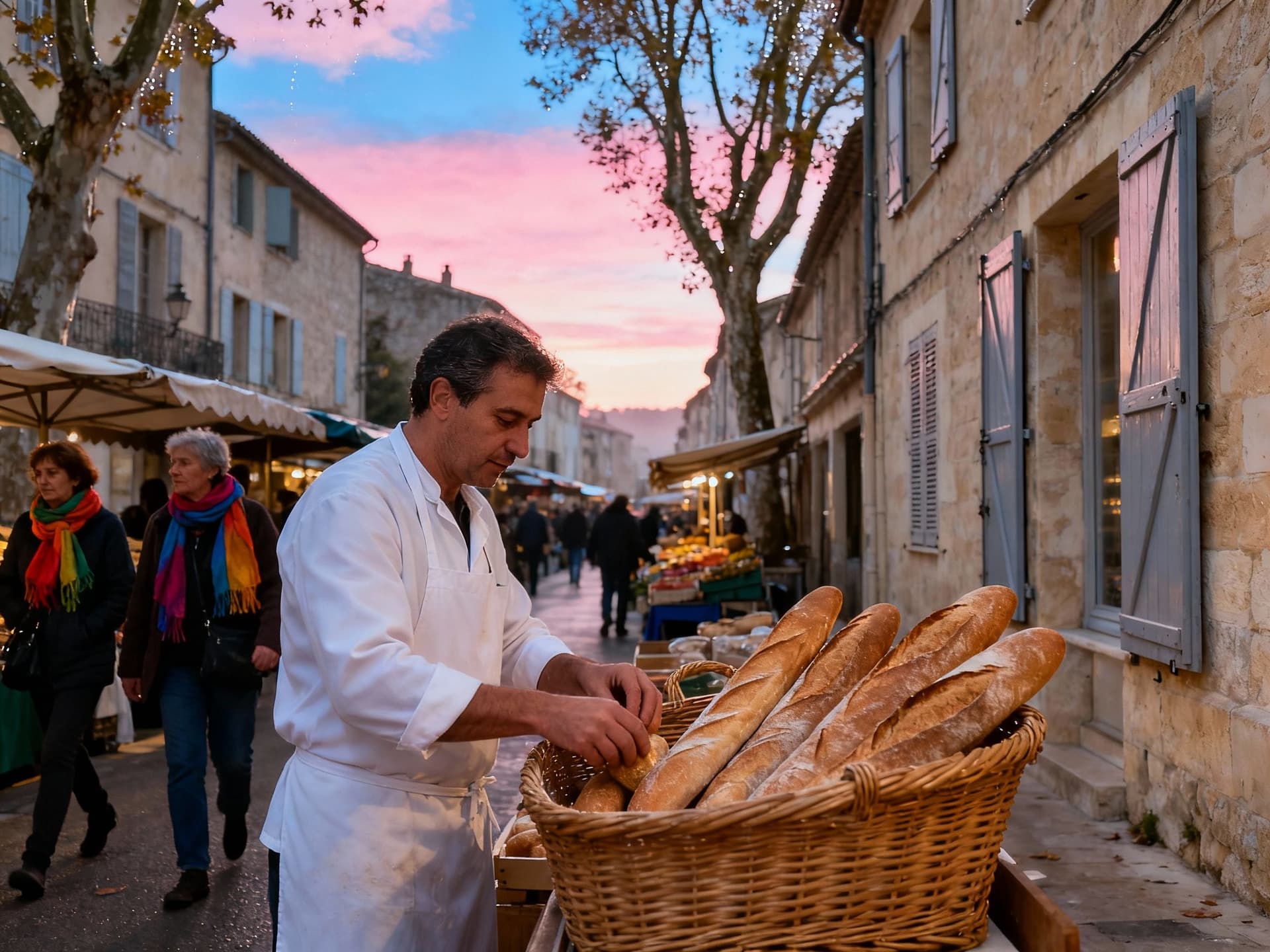The Off‑Season Purchase: How French Winter Skews Your View
Winter viewings in France can mislead: combine summer visits, seasonal comparables and INSEE/Notaires data to avoid buying a seasonal fantasy.
Imagine a winter morning in Aix‑en‑Provence: shutters closed against a cool light, a boulanger on Rue Gaston de Saporta shaping loaves, and the market stalls emptying as the town wakes. The light is softer, the streets quieter, and properties that seemed too small in summer feel intimate and perfectly proportioned. That seasonal hush is seductive — and it is precisely why winter viewings in France can mislead buyers unless they know what to look for.
Living the French Life: how the seasons change everything

France is a country of rhythms: café terraces that fill from late morning in Bordeaux, fishing boats returning to Cassis at dusk, weekday markets in Lyon and languid Sunday promenades along Nice’s Promenade des Anglais. Those rhythms determine how a home is used — the courtyard that becomes the centre of summer life in Provence, the compact, well‑insulated flat in Paris that functions year‑round, the seaside villa whose value is skewed by high‑season demand. To buy well you must see not only the building but how its life changes with months and moods.
Provence & Aix: morning markets, narrow streets, seasonal intimacy
In towns such as Aix‑en‑Provence and L'Isle‑sur‑la‑Sorgue, the year is punctuated by marché days and harvest festivals. Properties with shaded cours and modest terraces come alive in May–September; in January those same features feel underused, sometimes wrongly flagged as defects by buyers visiting in winter. Look instead at insulation, heating systems and the proportion of interior to exterior living space — these indicate whether a home will work for you outside the sunlit season.
Paris & Lyon: urban texture and year‑round life
City life in Paris and Lyon does not pause for season. Bistros, galleries and theatre programmes sustain year‑round demand, and a compact apartment’s value is less dependent on weather. That stability explains why demand and price movement in urban centres often diverge from coastal or rural areas; recent INSEE analysis shows renewed price growth nationally after a period of stagnation, but regional patterns remain uneven. A seasonal visit will underplay the daily hum that supports an urban investment.
Making the move: how seasonality alters perception and market signals

Numbers matter. After six quarters of decline, INSEE recorded a rebound in Q1 2025 with house prices rising nationally, a reminder that short‑term impressions from a winter visit do not always reflect market direction. Yet seasonal demand still distorts local pricing signals: coastal towns show sharper high‑season spikes, while provincial markets may register delayed recoveries. Use national and regional indices together with on‑the‑ground evidence when forming an offer.
Property styles and seasonal utility
Different property types respond differently to season. Stone mas with deep eaves and thick walls in Provence regulate temperature naturally and suit year‑round living once heating is modernised. Seaside villas with open terraces and single‑glazed windows excel in summer but demand investment for comfort in winter. Parisian Haussmannien flats, with their smaller exterior footprint and central heating, are less seasonal in use and therefore often a steadier prospect for long‑term owners.
How local experts help (step‑by‑step)
Engage an agent with proven local seasonality insight. Ask for anonymised recent rental and sales data across months, request comparable transactions from each season, verify heating and insulation upgrades, negotiate a conditional offer that allows seasonal inspections. These steps reduce the risk of buying into a life that only exists between June and September.
Practical checks to do on a winter visit
• Inspect heating (boiler age, fuel type, zoned radiators) and request past utility bills. • Assess glazing and shutter condition; note how rooms face sun and prevailing winds. • Ask local agents about off‑season occupancy and whether neighbours are seasonal owners. • Visit communal spaces (markets, cafés) at different times to test year‑round vitality. • Review local transaction cadence: how many sales happen in winter versus summer, and at what price spread.
Insider knowledge: what expats wish they'd known
Expats often tell the same stories: they visited in summer, fell for a façade of tourists and markets, then discovered the town quiet and impractical in winter. They also say that when they bought after winter viewings alone they underestimated maintenance needs and the cost of making a property comfortable year‑round. The lesson is simple: triangulate — combine a summer visit, a winter check and robust local data before committing.
Cultural and seasonal cues that shape neighbourhood life
In many French towns the rhythm of life slows decisively in January and February. Local cafés shorten hours; artisans close for vacances; municipal events are fewer. This is not neglect but a cultural rhythm — a neighbourhood alive in July may be quiet in January by design. If you crave continuous activity, prioritise districts with year‑round services such as central Paris arrondissements, university towns like Montpellier, or towns with diverse economic bases.
Looking ahead: how to make a seasonal purchase resilient
Plan for adaptability: invest in insulation and modern heating, consider flexible room layouts that convert indoor space for winter use, and prioritise reliable local services. These measures preserve lifestyle value and rental potential beyond the high season. For collectors and stewards of heritage homes, a thoughtful restoration that respects fabric while improving comfort often delivers the best return — emotionally and financially.
Conclusion: fall in love deliberately. Let the light of a Provençal summer seduce you, let a Parisian winter charm you, but do not let a single season define your judgement. Use national and regional market data, insist on seasonal comparables, and work with an agent who understands how life in France changes with the months. That way you buy the life you imagine, not the season that seduced you.
Relocating from London to Mallorca in 2014, I guide UK buyers through cross-border investment and tax considerations. I specialise in provenance, design integrity, and long-term value.


